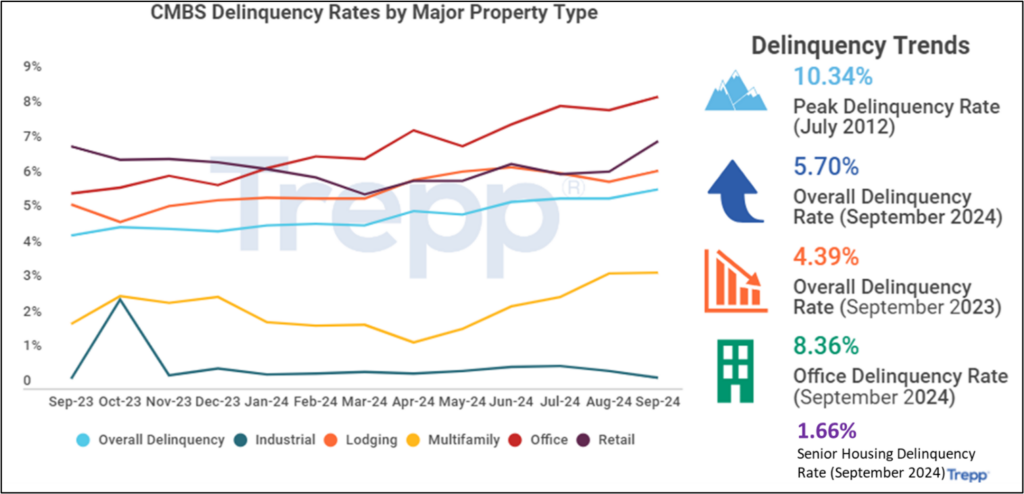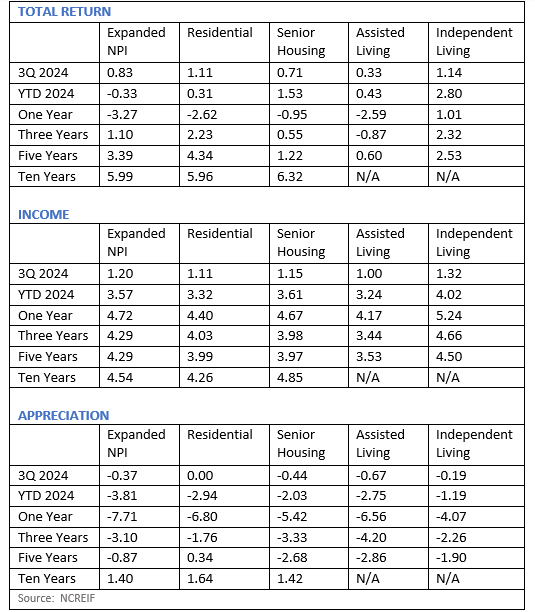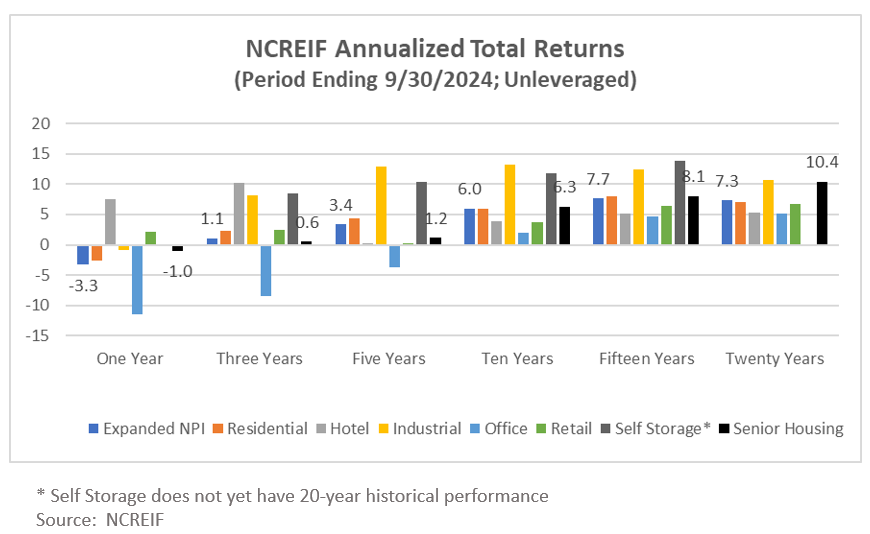The following analysis examines the occupancy and year-over-year changes in inventory and same-store asking rent growth—by care segment—within 1,062 Continuing Care Retirement Communities (CCRCs) and 13,796 non-CCRCs in the 99 NIC MAP Primary and Secondary Markets. The analysis also explores supply and demand dynamics in the memory care segment over recent years.
3Q 2024 Market Fundamentals by Care Segment – CCRCs vs. non-CCRCs
The exhibit below compares the market performance of CCRCs and non-CCRCs by care segment for the third quarter of 2024, highlighting year-over-year changes in occupancy, inventory, and asking rent growth.
Occupancy. CCRCs continued to outpace non-CCRCs in occupancy rates across all care segments. The largest occupancy difference in the third quarter of 2024 was in the independent living segment (5.2pps), followed by the assisted living segment (4.2pps), with the smallest gap in the nursing care segment (1.0pps).
Asking Rent. The highest year-over-year rent growth for non-CCRCs was seen in the independent living (4.3% to $4,098) and assisted living segments (4.3% to $6,410), while CCRCs recorded the largest asking rent growth in the memory care segment (4.3% to $8,749).
Note, these figures denote asking rates and do not consider any potential discounting.
Inventory. Nursing care inventory saw the largest declines for both CCRCs (-1.5%) and non-CCRCs (-0.4%) from the prior year. Among CCRCs, memory care was the only care segment to report positive inventory growth, up by 1.2% from year-earlier level. For non-CCRCs, independent living and memory care segments saw the largest year-over-year inventory growth, at 1.8% and 1.7%, respectively.
Negative inventory growth can occur when units/beds are temporarily or permanently taken offline or converted to another care segment, outweighing added inventory.

3Q 2024 Memory Care Segment Performance
The exhibit below shows the annual absorption rates, defined as the change in the occupied units from the previous year, across all care segments within CCRCs. In the third quarter of 2024, the year-over-year absorption rates for memory care segments led with 5.3%, outperforming assisted living (2.4%), independent living (0.9%), and nursing care (0.5%), and showcasing relatively strong market fundamentals. Memory care segments within CCRCs continued to demonstrate notable growth in demand in recent quarters. The segment has consistently led in absorption rates over the past three years and doubled its absorption growth from levels the year before.

Since the third quarter of 2019, inventory for memory care segments within CCRCs has grown at a relatively faster pace than assisted living and nursing care segments. While independent living has taken the lead in growth over recent quarters, memory care segments within CCRCs continue to demonstrate steady expansion.
In the third quarter of 2024, the occupancy rate for CCRC memory care segments increased for the 10th consecutive quarter, reaching 89.9%. This rate places memory care ahead of nursing care, which has an occupancy rate of 85.3%, and assisted living at 89.8%, while independent living remains the highest at 91.6%.
In conclusion, the memory care segment in CCRCs has shown notable strength, with the highest absorption rates and positive inventory growth. This sustained momentum underscores the importance of memory care offerings in CCRCs, positioning it as a resilient and expanding care segment within senior housing.
Want to learn more about the drivers of memory care growth in CCRCs? Check out Growing Prevalence of Memory Care in Life Plan Communities.





